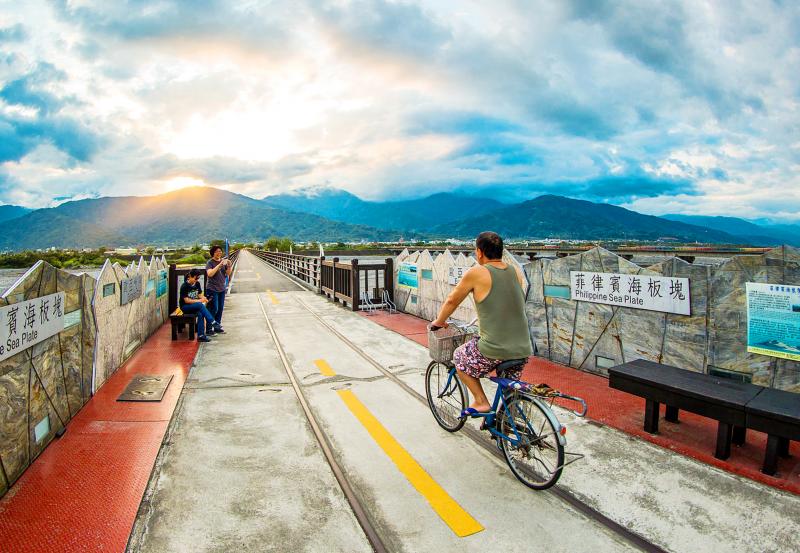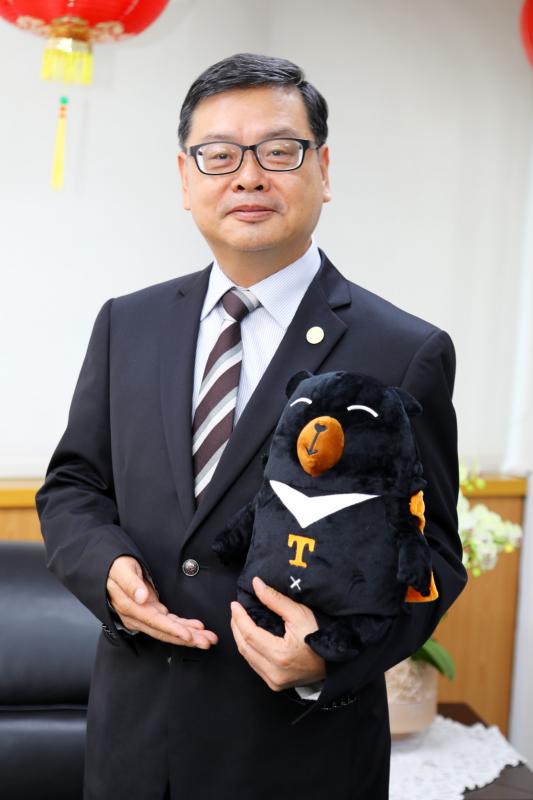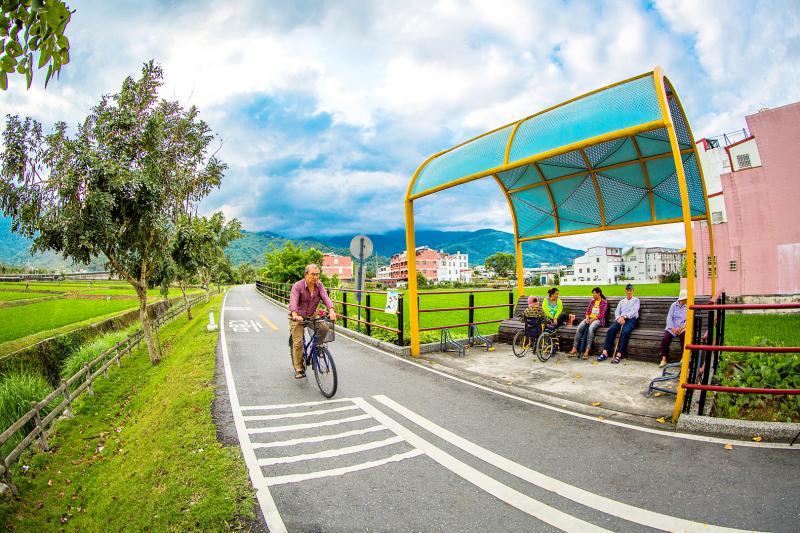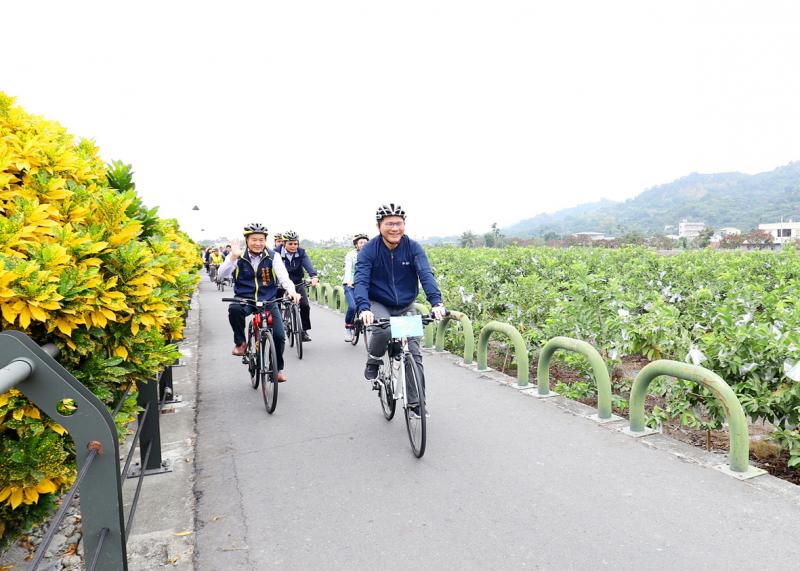“Well, if it cannot happen this year because of the pandemic,” Tourism Bureau Director General Chang Shi-chung (張錫聰) says at the end of his interview with Cycling Shorts last week, “at least we’ll be ready to promote it next year.”
Chang is discussing the Year of Cycling Tourism (自行車旅遊年) that has long been planned for this year. He has spent the previous 30 minutes introducing the various infrastructure projects undertaken over recent years and those proposed for the next few.
Essentially, the Bureau, under the Ministry of Transportation and Communications (MOTC), has been pulling together resources from a wide range of national and local government agencies, as well as private companies and NGOs.

Photo courtesy of the Taiwan Tourism Bureau
These include the Construction Department of the Ministry of the Interior, Sports Department of the Ministry of Education; bodies overseeing the country’s national parks, Railway Administration, High Speed Rail and bus companies; representatives of the hotel and catering industries as well, of course, as the main bicycle manufacturers and tour companies; and cyclists’ groups such as the Cycling Life Style Foundation (自行車新文化基金會).
This means that after a decade or more of piecemeal development of short cycle paths in numerous towns, cities and counties, these have now been woven together into a network of routes that totals more than 4,000 kilometers and is still growing.
Where designated paths are not possible, a blue bicycle lane has been painted along main roads to enhance safety. Also, where feasible, alternative routes through quiet farming villages have been mapped out that do not add greatly to the distance.

Photo courtesy of the Taiwan Tourism Bureau
TAKING A BREAK
Provision of rest areas has also been increased and their services enhanced, Chang says, so that now every eight to 12 kilometers on a round-island ride cyclists can find places to wash and sit down. There are also toilets and drinking water fountains, simple medical kits and even some tools for bicycle maintenance. In addition to such services at almost every police station islandwide, railway stations and local government offices have also now been added.
Shortly before officially launching the program, Minister Lin Chia-lung (林佳龍) led the heads of all MOTC units, including the Tourism Bureau, on a round-island relay between Nov. 28 and Dec. 4 last year.

Photo courtesy of the Taiwan Tourism Bureau
So, although not a regular cyclist himself, Chang has tasted the experience of cycle touring. What were his impressions?
“Vulnerability,” he says.
Wherever there was a section of the route that was not on a dedicated bicycle path, he felt intimidated by the cars and trucks.

Photo courtesy of the Taiwan Tourism Bureau
This is why the MOTC spent so much money linking various local government implemented bicycle networks, he says, referring to the NT$3.2 billion (US$114 million) earmarked in 2019 to be spent over the following four years.
He then outlines the “seven multiple routes and nine tour experience routes” specifically created for promotion in the cycle touring year. The former includes the north and northeast coasts, Yilan Plain, several routes further down the east coast and one on the Penghu Islands; the latter involve rides with more climbing, such as into the foothills of Yunlin and Chiayi counties, as well as a ride up to Sun Moon Lake.
WHO’S LEADING WHO
It is hard to stop one’s mind from wandering back to last week’s column, “If you build it, they will ride,” about the 200-plus kilometers of riverside cycle paths built over the last two decades in Taipei and surrounding areas that have been a significant factor in transforming Taiwan into a nation of cycle lovers.
Is the MOTC, like the Taipei City Government of the 1990s, showing insight in developing similar islandwide facilities to encourage the hundreds of thousands of riverside cyclists to expand their horizons and head off around the island?
Or, on the contrary, is it simply responding to citizens’ needs after this horizon-expansion had already happened of its own accord? Or perhaps it’s a bit of both.
After all, attempting a huandao (環島, round-island) ride entered the popular imagination following depiction of just such a feat by the long-haired, guitar-playing protagonist of Chen Hwai-en’s (陳懷恩) 2006 movie Island Etude (練習曲).
It’s now almost de rigueur for graduating students to spend a week-plus riding the thousand kilometers or so around Taiwan. And, having completed it, often on a borrowed or rented machine, many discover the pleasures of cycling and take up the pastime on a more regular basis.
The route has also come to the attention of cycling communities in Asia and beyond, and it is not uncommon to meet Japanese, Malaysians, Filipinos and other cyclists visiting Taiwan specifically to undertake this challenge.
Asked if visitors from these countries would be a primary focus of the Tourism Bureau’s marketing, Chang says that tourists interested in visiting Taiwan “will be treated equally and enthusiastically, irrespective of nationality, skin color or gender.”
Curiously, the bureau’s most recent statistics for 2019 estimate that, of the 300,000 foreign visitors who cycled during their stay in Taiwan, the largest group at 21 percent came from China, followed by Europe (11 percent), Japan (10 percent), Hong Kong and Macau (10 percent) and South Korea and North America (7 percent each).
But, Chang goes on to say, this includes everything from renting a YouBike for a 10-minute ride in the city, to bringing one’s own bike to tour in the mountains or participate in an elite event.
He points to figures from Giant Bicycles which, as well as being the world’s top manufacturer of bikes, is also one of the nation’s main renters of higher-end touring bikes. These suggest that the main groups of visiting cyclists do indeed come from Hong Kong, Singapore and Malaysia, with most coming for three to nine days, and riding either along the east coast or East Rift Valley between Hualien and Taitung, or completing a huandao.
Perhaps MOTC officials pay attention to the numerous blogs, vlogs, Facebook and other social media posts by these riders. Certainly many of the infrastructure investments Chang mentions relate to improving safety and getting cyclists out of cities and into the countryside as quickly as possible, two concerns often mentioned.
So, whether foreign cyclists do manage to get to Taiwan during the 12 months of the program is, as Chang says, not really a problem. He is clearly confident that Taiwan’s magnificent scenery, enhanced by tourism professionals and entrepreneurs, will continue to attract large numbers for years to come.
Mark Caltonhill bikes, and writes, and writes about bikes.

That US assistance was a model for Taiwan’s spectacular development success was early recognized by policymakers and analysts. In a report to the US Congress for the fiscal year 1962, former President John F. Kennedy noted Taiwan’s “rapid economic growth,” was “producing a substantial net gain in living.” Kennedy had a stake in Taiwan’s achievements and the US’ official development assistance (ODA) in general: In September 1961, his entreaty to make the 1960s a “decade of development,” and an accompanying proposal for dedicated legislation to this end, had been formalized by congressional passage of the Foreign Assistance Act. Two

Despite the intense sunshine, we were hardly breaking a sweat as we cruised along the flat, dedicated bike lane, well protected from the heat by a canopy of trees. The electric assist on the bikes likely made a difference, too. Far removed from the bustle and noise of the Taichung traffic, we admired the serene rural scenery, making our way over rivers, alongside rice paddies and through pear orchards. Our route for the day covered two bike paths that connect in Fengyuan District (豐原) and are best done together. The Hou-Feng Bike Path (后豐鐵馬道) runs southward from Houli District (后里) while the

March 31 to April 6 On May 13, 1950, National Taiwan University Hospital otolaryngologist Su You-peng (蘇友鵬) was summoned to the director’s office. He thought someone had complained about him practicing the violin at night, but when he entered the room, he knew something was terribly wrong. He saw several burly men who appeared to be government secret agents, and three other resident doctors: internist Hsu Chiang (許強), dermatologist Hu Pao-chen (胡寶珍) and ophthalmologist Hu Hsin-lin (胡鑫麟). They were handcuffed, herded onto two jeeps and taken to the Secrecy Bureau (保密局) for questioning. Su was still in his doctor’s robes at

Mirror mirror on the wall, what’s the fairest Disney live-action remake of them all? Wait, mirror. Hold on a second. Maybe choosing from the likes of Alice in Wonderland (2010), Mulan (2020) and The Lion King (2019) isn’t such a good idea. Mirror, on second thought, what’s on Netflix? Even the most devoted fans would have to acknowledge that these have not been the most illustrious illustrations of Disney magic. At their best (Pete’s Dragon? Cinderella?) they breathe life into old classics that could use a little updating. At their worst, well, blue Will Smith. Given the rapacious rate of remakes in modern